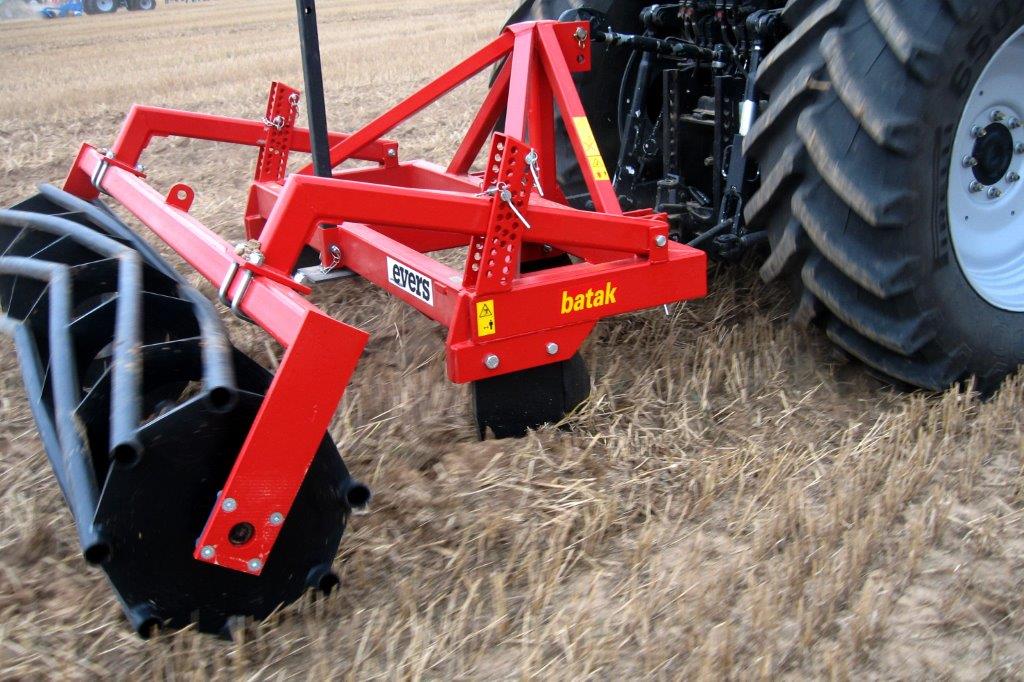

Cultivating agricultural land causes changes in the soil structure. The use of heavy farm machinery is just one of the causes of soil compactions. Using a subsoiler to loosen or break up these compactions from time to time, the vitality of the soil is maintained and an optimal soil structure is guaranteed. These are important preconditions for a good yield.
Various forms of tillage are available, depending on the type of soil compaction to be removed while leaving the soil structure intact as much as possible. Choosing the right machine is very important in that respect. Certain subsoilers are designed to mix the soil completely, while other models only break up compactions and leave other soil layers entirely intact.
For the right solution, we look at the situation on your land. Is it about the headland, or is it an old plough pan? Are there pans in the soil? Our subsoilers will solve the problem effortlessly. The field returns to the state where it can absorb a sufficient amount of water, while excess water drains away and crops grow well and evenly. The roots can reach water in the soil, even in dry periods. The crop roots have no problem to take up any nutrients from the soil.
Using a subsoiler exactly tailored to solve the problems at hand will improve the water and air balance and minimise any harmful soil moisture. As a result, plants can easier develop roots and take up the available nutrients. The extensive range of Evers products has the right machine for every farm and every type of soil. Evers pre-subsoilers and subsoilers are designed to mainly work in deeper soil layers. Combined with e.g. an Evers disc harrow, several operations can be carried out in one pass.
Size in cm
| Type | No. of tines / legs | Working width | Tine spacing | Frame height | Max. Working depth | HP | Cat. | Hydr. folding frams | Transport width (incl. rear roller) | Kg (incl. rear roller |
|---|---|---|---|---|---|---|---|---|---|---|
| Timor 3-225 | 3 | 225 | 75 | 75 | 60 | 75-120 | 3L | No | 200 | 530 |
| Timor 3-270 | 3 | 270 | 90 | 75 | 60 | 90-150 | 3L | No | 250 | 610 |
| Java 3-225 | 3 | 225 | 75 | 83 | 70 | 75-120 | 3L | No | 225 | 710 |
| Java 3-270 | 3 | 270 | 90 | 83 | 70 | 90-150 | 3L | No | 250 | 775 |
| Java 3-300 | 3 | 300 | 100 | 83 | 70 | 90-150 | 3L | No | 275 | 810 |
| Java 5-300 | 5 | 300 | 60 | 83 | 70 | 110-180 | 3L | No | 300 | 1150 |
| Java 7-525 | 7 | 525 | 75 | 83 | 70 | 220-300 | 3 | Yes | 320 | 2590 |
| Java HS 3-270 | 3 | 270 | 90 | 83 | 70 | 120-240 | 3L | No | 250 | 1225 |
| Java HS 3-300 | 3 | 300 | 100 | 83 | 70 | 120-240 | 3L | No | 275 | 1175 |
| Java HS 5-300 | 5 | 300 | 60 | 83 | 70 | 150-300 | 3L | No | 300 | 1660 |
| Bali 3-270 | 3 | 270 | 90 | 93 | 80 | 140-210 | 3 | No | 250 | 925 |
| Bali 3-300 | 3 | 300 | 100 | 93 | 80 | 150-220 | 3 | No | 275 | 960 |
Size in cm
| Type | No. of tines / legs | Working width | Tine spacing | Frame height | Max. Working depth | HP | Cat. | Transport width (incl. rear roller) | Kg (incl. rear roller) |
|---|---|---|---|---|---|---|---|---|---|
| Batak 3-270 | 3 | 270 | 90 | 85 | 70 | 175-250 | 3 | 250 | 950 |
| Batak 3-300 | 3 | 300 | 100 | 85 | 70 | 190-280 | 3 | 275 | 1005 |
| Batak 4-300 | 4 | 300 | 75 | 85 | 70 | 220-360 | 3 | 300 | 1300 |
| Batak 5-300 | 5 | 300 | 60 | 85 | 70 | 250-450 | 3 | 300 | 1590 |
| Batak HS 3-270 | 3 | 270 | 90 | 85 | 70 | 175-250 | 3 | 250 | 1285 |
| Batak HS 5-300 | 5 | 300 | 60 | 85 | 70 | 190-280 | 3 | 300 | 1720 |
| Trakehner HS 4-300 | 4 | 300 | 75 | 85 | 70 | 200-350 | 3 | 300 | 1840 |
Size in cm
| Type | No. of tines / legs | Working width | Tine spacing | Frame height | Max. working depth | HP | Cat. | Transport width (incl. rear roller) | Kg (incl. rear roller) |
|---|---|---|---|---|---|---|---|---|---|
| Sumbawa NK3 | 3 | 150-224 | 75-112 | 85 | 70 | 90-140 | 3L | 275 | 1020 |
| Sumbawa 3 | 3 | 150-224 | 75-112 | 83 | 70 | 75-115 | 3L | 275 | 995 |